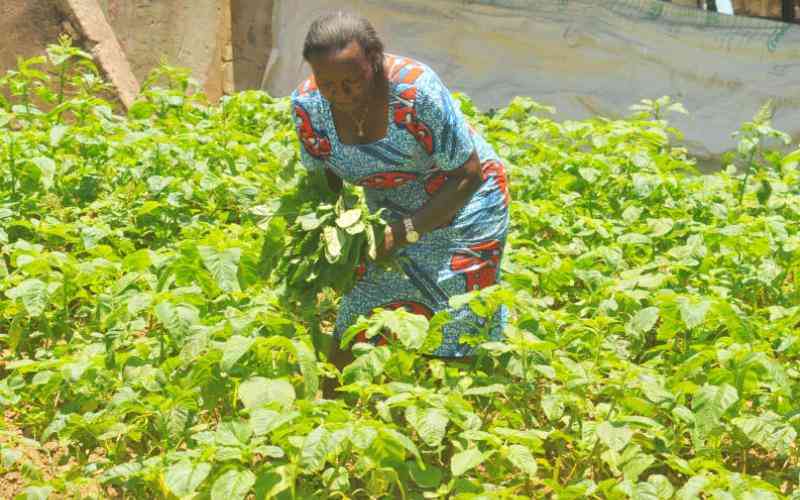×
The Standard e-Paper
Fearless, Trusted News

Nyamvula Lenga tendering some Mchicha at her quarter acre plot at Lilongwe area. [Gideon Maundu, Standard]
Amaranth, which is locally known as mchicha, is one of Kenya's indigenous vegetables that is tastey and highly nutritious. It is a gluten-free grain that provides plenty of fibre, protein and micronutrients.